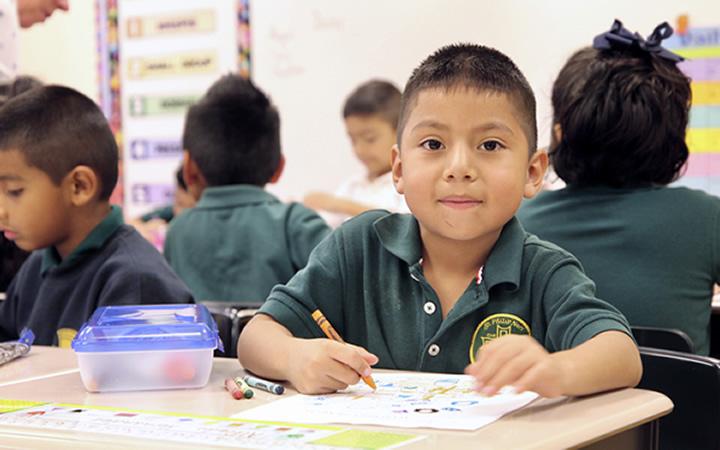When we design professional development sessions, trainings, or classes, we always toe the very delicate line between (1) making blended learning seem very simple by presenting a limited view, and (2) totally overwhelming the participants by presenting every possible iteration of the annoyingly broad term, "blended learning." We try to help teachers adopt a specific approach to blended learning that we believe maximizes student learning and enhances the human dignity of both students and teachers without boxing the teachers into a single model.
But lately I have realized that our balance between too much structure and not enough might be a little off balance. I can think of three times over the past month when a teacher nervously approached me about making a change to the blended model in her classroom and wondered if it was acceptable or not. My response is always, "Who said there was a rule against that?"
I admit my own fault in presenting such a narrow view of blended learning that teachers had the impression that blended learning must be done in a specific way. The truth is that there is no universal right or wrong way to do blended learning. Of course there are best practices, but even best practices vary based on the content provider, the students, the grade level, the lesson objective and design, the teacher, the classroom space, the other resources available...the list could go on and on!
To make this point especially clear, here are three "rules" of blended learning and why they are not rules at all.
-
Whole-group instruction has no place in blended classrooms.
-
Every lesson should follow the same format.
-
Students have to use online programs every day.

Let's start with the first rule. Because we want to personalize student learning, many people assume that learning has to be all personalized, all the time. We strive to meet the needs of each student in every part of the lesson, but that does NOT mean that learning never happens as a whole class. In fact, because we believe that we learn best in community, we encourage our teachers to regularly incorporate whole-group mini-lessons and activities. Most of our teachers begin and end each lesson as a whole class and strategically use stations or flexible learning time to meet the distinct needs of each student.
But is there just one way to do that? Absolutely not! Most of our teachers use a station rotation model, but many of them switch the number of groups or the lengths of the stations on a daily or weekly basis. One teacher recently found that she likes to utilize four performance-based groups for certain lessons and two or three multilevel groups for others, so her classroom looks different daily based upon the lesson objective and the best way she has found for students to meet it. Another teacher likes to utilize a flexible learning block in which students work independently online or offline for about 45 minutes while she conducts brief goal-setting meetings with individual students. Our teachers adjust what blended learning looks like every day to meet the needs of their students so lessons rarely, if ever, follow the exact same format.

And because every day looks different, there are some days when students do not learn online (gasp!). Some teachers have found that it makes sense to do a whole-group lesson and activity that lasts the entire class, particularly in ELA when they are introducing new texts. We are totally comfortable with some days being full of offline learning as long as teachers think critically about the best way to accomplish the lesson objective and accelerate student learning over the long term–rather than defaulting to what they have always done.
Rather than being upset when we see our teachers experimenting and "breaking rules," we are thrilled! We love that teachers are taking the blended model and tweaking it to make it their own. Stay tuned to learn more about what our classrooms look like this year!
 Alliance for Catholic Education
Alliance for Catholic Education
